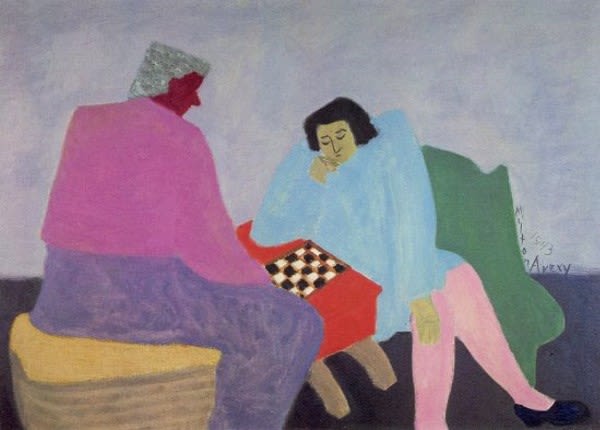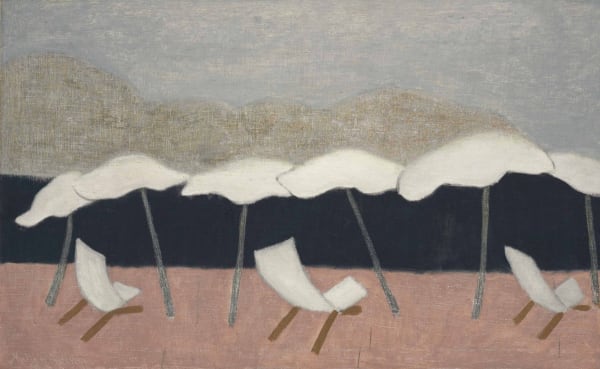I try to construct a picture in which shapes, spaces, colors, form a set of unique relationships, independent of any subject matter. At the same time I try to capture and translate the excitement and emotion aroused in me by the impact with the original idea.
- Milton Avery
Milton Avery and his family went on a summer vacation every year, even when money was tight and it was difficult to make ends meet. Avery, his wife, Sally, and daughter, March, would leave their home in New York City and head to more scenic sites, like Gloucester, Massachusetts, where the couple met during a summer art program. Sally was twenty-two when they met, Avery nearly twenty years older, and he, initially, lied about his age. They were married in 1926…a marriage that lasted until 1965, when Avery died.
The family vacations were spent painting. Sally was a gifted artist and also a strong supporter of Avery's work. Their daughter, March, began painting and drawing when she was two and went on to become a fine painter with a gallery in New York.
The Bruce Museum in Greenwich, Connecticut has put together an exhibit that features paintings, drawings and travel sketchbooks done by Milton, Sally and March. Summer with the Averys runs from now through September 1, 2019.
Milton Avery's Summers
Milton Avery came to painting late in life. He was born in Sand Bank, New York in 1885. The family moved to Wilson Station, Connecticut when Avery was thirteen. He began doing factory work at age sixteen. After his father, then his brother-in-law, died, he became the sole support of nearly a dozen relatives.
When Avery was twenty-two, he saw a magazine ad for a class in lettering that was offered at the Connecticut League of Art Students. The ad said that commercial lettering was a good way to make money, so Avery went to the school to sign up. The class was full, and Avery decided to sign up for a drawing class. That decision changed his life and became determined to pursue a career in art.
He worked as a file clerk at night and attended art classes at the School of the Art Society of Hartford. He was finally able to move to New York in 1925. He was forty years old. Encouraged by Sally, he attended night classes at the Art Students League while both he, but mainly Sally, supported the family.
He is often considered the American Fauve, but he was never influenced by art fads or critics. His work was considered too abstract by some critics and not abstract enough by others. He had a profound influence on much younger painters in New York, like Mark Rothko, Adolph Gottlieb and Barnett Newman.
In 1935, when he was fifty, Avery began to have commercial success. He had the ability to create strong, simple forms using saturated and unifying colors. Many of his best works are portraits and beach scenes, done during the family's summer holidays. The Whitney held a retrospective of his work in 1960 and again in 1982. Last year, his White Umbrellas painting, from the Peggy and David Rockefeller collection, sold at Christie's for $1,872,500.
Milton Avery at the Surovek Gallery
Please contact us if you would like more information about Man and Sea or any of the other fine works available at the Surovek Gallery.
References:
Alexander Eliot. Three Hundred Years of American Painting. Time Incorporated. 1957.
Scott Smith. Summer with the Averys exhibit opening at Bruce Museum. May 8, 2019.
May 9th, 2019




